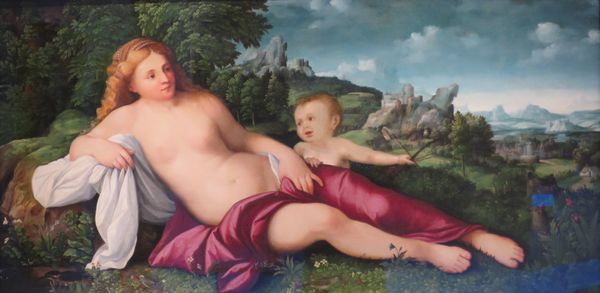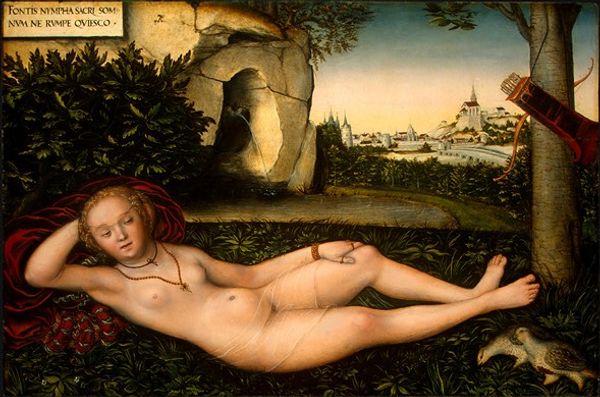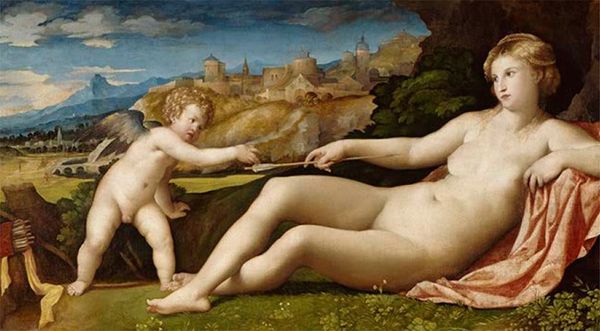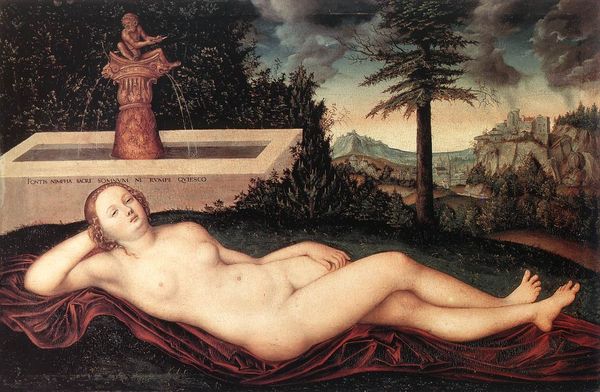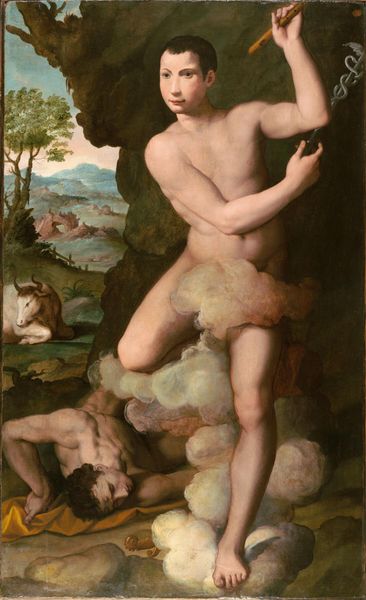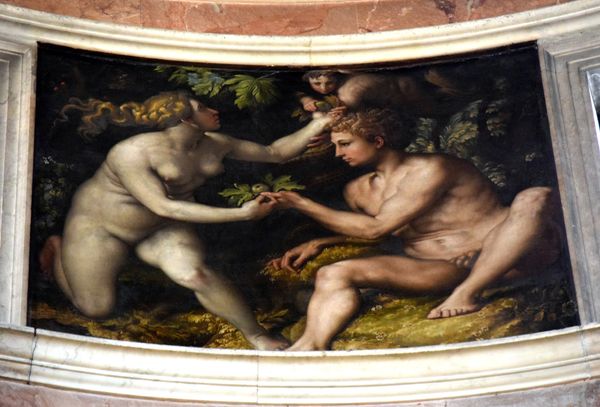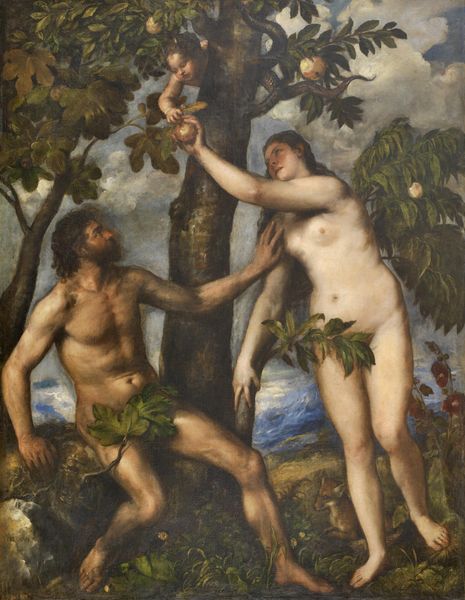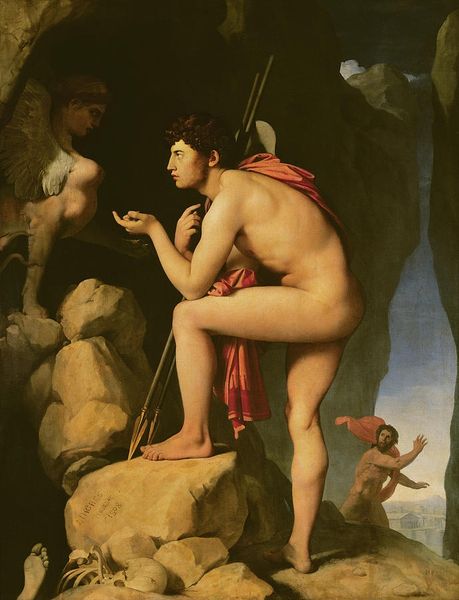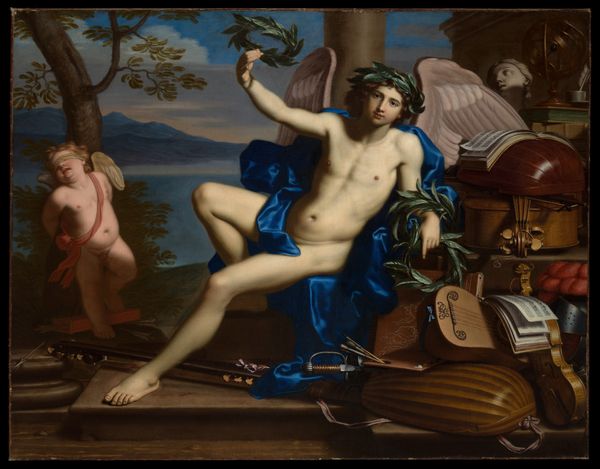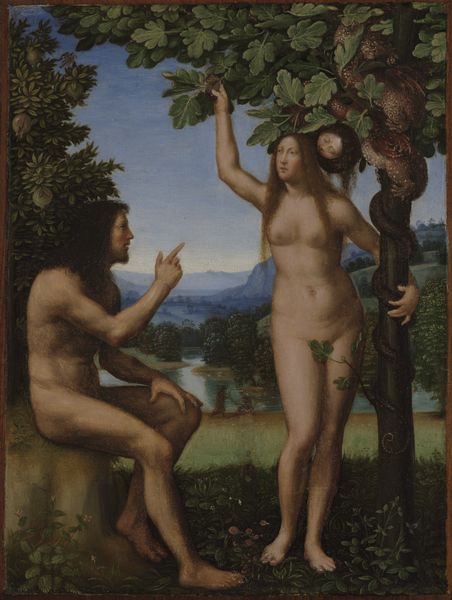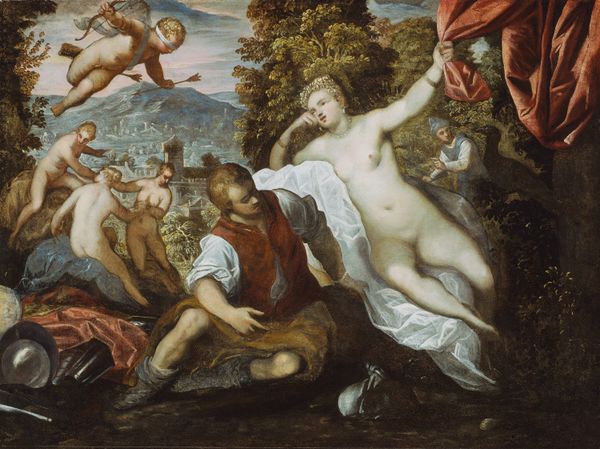
oil-paint
#
allegory
#
oil-paint
#
landscape
#
figuration
#
oil painting
#
genre-painting
#
history-painting
#
italian-renaissance
#
nude
Dimensions: overall: 106.7 x 135.9 cm (42 x 53 1/2 in.) framed: 138.4 x 167.2 x 9.2 cm (54 1/2 x 65 13/16 x 3 5/8 in.)
Copyright: National Gallery of Art: CC0 1.0
Curator: This is Bernardino Luini’s "Venus," created around 1530 using oil paint. Luini, deeply influenced by Leonardo da Vinci, painted this scene, positioning the goddess against a detailed landscape backdrop. Editor: Okay, first impression: she looks contemplative, almost a little sad, like she's just been dumped by Mars and is wondering where it all went wrong. And the landscape, though detailed, feels…distant. Almost like she's not really part of it. Curator: The placement is crucial. By situating Venus within this idyllic, yet somewhat detached, landscape, Luini speaks to larger discourses about beauty, desire, and their relationship to the natural world in the Italian Renaissance. Editor: Desire for sure, that's what artists and their patrons thought would stir up the loins in the Renaissance and beyond! But that slight draping, almost accidental... that's interesting. There is that castle far in the background and maybe it feels like it protects what truly matters: Venus’ private thoughts. Curator: Absolutely. The delicate drapery calls attention to Venus’ form while simultaneously hinting at modesty. Renaissance ideals often placed women within carefully constructed binaries, emphasizing virtue and beauty in equal measure. Think of it as a visual negotiation, reflecting the period's socio-cultural expectations regarding femininity and sexuality. Editor: Right. She has agency but still is an object of desire! What are the power structures at play? I keep looking at the water. So still and then BOOM those dangerous craggy mountain cliffs on the other side! Maybe SHE controls them and this work tells us to respect all the many sides of a women… Anyways this work does seem relevant in the 21st century even if it hangs as "art history" for most museum goers. Curator: The quiet strength that speaks about a subject painted more than 500 years ago might mean a visual negotiation remains quite potent still. These are questions for ourselves still to pose today and even more reason to be appreciative of Venus. Editor: I feel ya! Alright then, thanks for joining me!
Comments
No comments
Be the first to comment and join the conversation on the ultimate creative platform.

